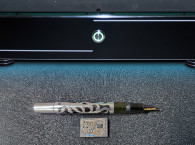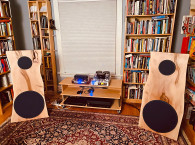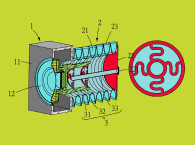We all know reflex systems are more efficient and offer deeper bass than sealed systems. However, the vast majority still fall short of their potential by 6 to 12 dB or more. Worse yet, often people don’t realize how vulnerable drivers are to damage. Many abuse woofers without knowing it. Few realize how much more sound output is possible from a DSP Assisted Reflex design.
The Yin and the Yang of Vented Systems
The Yin: At the tuning frequency (“fb”), the port or passive radiator generates 70-80% of the air movement. At frequencies near fb, cone excursion shrinks to a minimum. The box/port combination presents a stiff load to the driver. Thus, the driver has great leverage. Air displacement from the port approaches a maximum. In this band of frequencies, very high output is possible. Since the port output can easily exceed driver output by 3× (10 dB), a small driver can displace lots of air (see Figure 1).

The Yang: The full potential of a vented design is rarely realized. Most ports are too small and create air noise and losses. The proliferation of high Xmax drivers makes this worse. Low-cost, high-power digital amplifiers make it even worse. The popularity of compact, low-efficiency systems makes it worse again, as I shall explain.
Solutions are neither difficult nor expensive. A revolution in vented enclosure design is now upon us. This article describes an easy DSP method that effectively doubles or triples real-world output.
It is well known that below resonance, a ported box ceases to resist the woofer’s movement, unloading the cone and allowing out-of-control excursions. Everybody’s heard “You should use a subsonic filter with vented speakers.” I don’t know about you but I assumed we could ignore that when LPs gave way to CDs. And in my 30 years of designing speakers, I do not recall anyone fully articulating the severity of this problem. It’s best illustrated with an actual example.
Consider the parameters of the 6” SB Acoustics SB15NAC30-8 woofer (see Table 1).
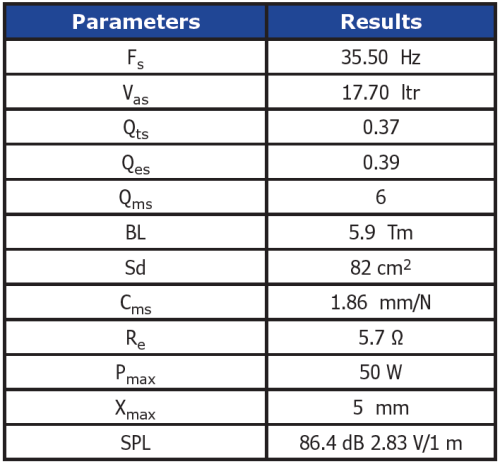
I put this driver in a reflex alignment, with a 12 ltr volume, fb = 40 Hz (see Figure 2). Xmax is 5 mm. Below 32 Hz, the system overloads at 10 W or less (see Figure 3).
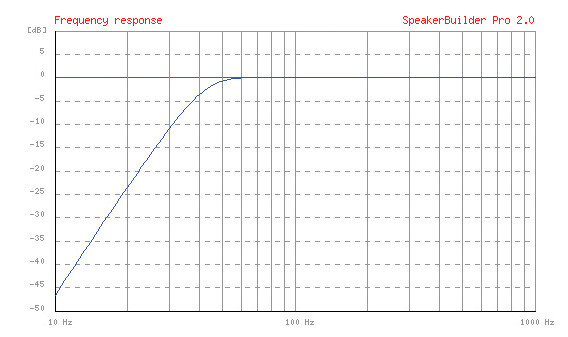
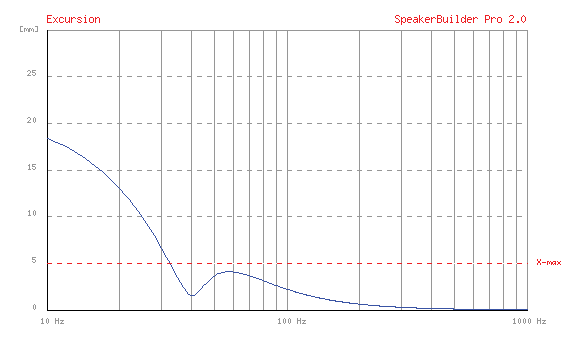
Other results include:
- At fb =40 Hz, the system’s maximum output is 103 dB with 100 W input. The vent does nearly all the work.
- At 60 Hz (1.5fb), the system’s maximum output is 98 dB. Excursion exceeds Xmax beyond 15 W input.
- At 20 Hz (0.5 fb), the excursion hits its limit at 1.5 W input (!) and only produces 64 dB SPL.
Admittedly this is an unusually compliant woofer, but such problems plague all reflex systems. For a system with fb near 40 Hz (a very common tuning range), bottoming or severe distortion with normal music is not only likely… it is a dead certainty.
Even at moderate volume levels, especially with house and electronic music, the woofer will be pressed to its limits by signals below 35 Hz. It will fall short of its sound pressure level (SPL) potential by 6 to 10 dB in its ideal band, 35 to 50 Hz.
Reflex boxes have a reputation for being boomy, muddy, or sluggish. I contend this is not because the reflex principle is inherently sloppy, slow, or inaccurate, but because of its acute below-resonance vulnerabilities. Problems come from the distortion and stresses caused by ignoring these issues.
Read the complete article now available online.



